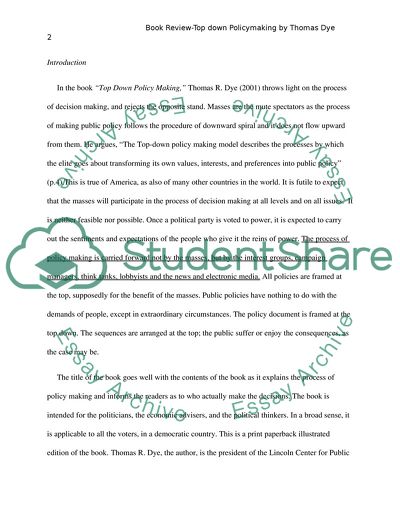Cite this document
(Top Down Policy Making by Thomas R. Dye Book Report/Review, n.d.)
Top Down Policy Making by Thomas R. Dye Book Report/Review. Retrieved from https://studentshare.org/politics/1615207-book-review-top-down-policymaking-by-thomas-dye
Top Down Policy Making by Thomas R. Dye Book Report/Review. Retrieved from https://studentshare.org/politics/1615207-book-review-top-down-policymaking-by-thomas-dye
(Top Down Policy Making by Thomas R. Dye Book Report/Review)
Top Down Policy Making by Thomas R. Dye Book Report/Review. https://studentshare.org/politics/1615207-book-review-top-down-policymaking-by-thomas-dye.
Top Down Policy Making by Thomas R. Dye Book Report/Review. https://studentshare.org/politics/1615207-book-review-top-down-policymaking-by-thomas-dye.
“Top Down Policy Making by Thomas R. Dye Book Report/Review”, n.d. https://studentshare.org/politics/1615207-book-review-top-down-policymaking-by-thomas-dye.


